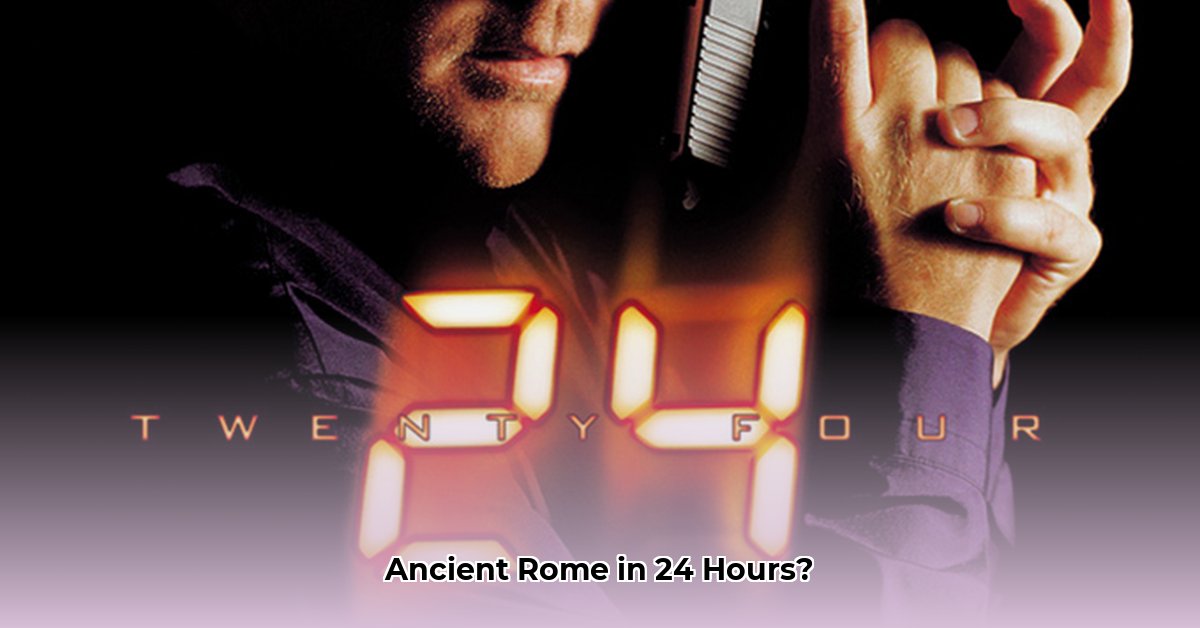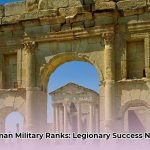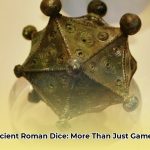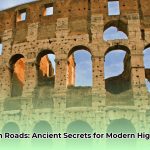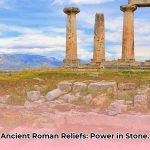Ever wondered what it truly felt like to stroll through the bustling streets of Ancient Rome as an ordinary citizen? Beyond the grandeur of emperors, the spectacle of gladiatorial combat, and the epic narratives of conquest, lies a rich tapestry of daily life in Ancient Rome waiting to be discovered. If you’re seeking a vivid and accessible journey through a typical Roman dies (day), Philip Matyszak’s “24 Hours in Ancient Rome” offers an unparalleled experience. This isn’t a dry academic text; it’s an immersive historical narrative that takes you hour-by-hour through the diverse routines of Roman inhabitants, from humble slave girls to influential senators, astrologers, and water-clock makers. One wonders about famous places in Rome during that period.
Matyszak’s unique approach allows readers to genuinely uncover the everyday realities of Ancient Rome, providing invaluable insights into how Romans spent their time and the intricate fabric of their society. But how foundational is this perspective to understanding Roman history, and what broader lessons can we glean from these ancient daily patterns in our modern quest for knowledge? Let’s embark on this fascinating journey, exploring the book’s unique merits, the nuances of Roman existence, and how cutting-edge technology is reshaping our understanding of this magnificent civilization.
24 Hours in Ancient Rome: A Portal to the Past
Philip Matyszak’s “24 Hours in Ancient Rome” stands out by eschewing traditional historical chronology in favor of a compelling, character-driven narrative. Instead of recounting battles or political upheavals, the book introduces a new Roman character with each passing hour, offering a microcosm of the city’s vibrant and often harsh reality.
Imagine witnessing a slave girl’s arduous dawn as she fetches water, feeling the tension alongside a senator navigating the treacherous political currents of the Forum, or experiencing the grim determination of a gladiator as he prepares for a life-or-death struggle. This narrative technique transforms history from a list of dates into an empathetic exploration of human experience, providing a visceral understanding of ancient Roman routines and the diverse people of Rome.
A particularly illuminating segment immerses the reader in the world of a medicina (medicine woman), meticulously crafting remedies and warding off malevolent spirits. This portrayal serves as a potent reminder that Roman medicine was often a blend of practical knowledge, superstition, and religious belief, a stark contrast to modern scientific paradigms.
A Diverse Cast of Characters
Matyszak excels at showcasing the vast spectrum of Roman society. From the elite echelons of power to the marginalized and enslaved, each character offers a unique lens through which to view Roman life. Readers gain insight into the political conspiracies unfolding in the Forum, the brutal reality of the amphitheater, and the intimate tranquility of domestic life within different social strata. This commitment to diversity ensures a comprehensive, albeit episodic, picture of the ancient world’s most influential city.
Who Should Read “24 Hours in Ancient Rome”?
This book is a treasure for educators seeking to infuse dynamism into history lessons. Its hourly snapshots can ignite discussions on social classes, the intricate workings of the Roman economy, or the pervasive influence of their beliefs and superstitions. Beyond the classroom, anyone with a general interest in Roman history who desires an engaging and accessible entry point will find this book immensely rewarding. It’s designed for broad appeal, bridging the gap between academic scholarship and popular history.
Why This Book Matters
“24 Hours in Ancient Rome” masterfully illustrates the immense complexity and vibrancy of Rome at its peak. It reveals the multifaceted nature of Roman daily existence, demonstrating that the ancient capital was as culturally dense and boisterous as any modern-day metropolis. The book’s success lies in its ability to humanize history, making distant figures relatable and their struggles tangible.
Beyond the Clock: Unraveling Roman Timekeeping and Daily Routines
To truly grasp how Romans spent their time, we must move beyond the simple narrative of individual lives and understand the very rhythm by which they measured their days – a rhythm profoundly different from our own. While “24 Hours in Ancient Rome” vividly portrays activities, comprehending the underlying system of Roman timekeeping adds a crucial layer of appreciation for their daily existence.
The Elasticity of the Roman Hour
Before the advent of precise mechanical clocks, Romans primarily relied on the sun. Days were fundamentally divided into ante meridiem (a.m.) and post meridiem (p.m.). However, the introduction of Greek sundials around 293 BCE complicated matters. Daylight was segmented into twelve horae (hours), but critically, these were variable hour lengths. A Roman ‘hour’ in summer could be significantly longer than in winter. Imagine summer days with luxuriously long hours, while winter hours sped by! This constant fluctuation presented unique challenges for Roman daily life and planning.
This elasticity profoundly impacted everyday activities. How do you schedule a day’s labor, a court proceeding, or a social engagement when the very units of time are in flux? This characteristic of Roman timekeeping highlights their deep connection to natural cycles and their adaptability, a stark contrast to our regimented, fixed-hour world. For instance, a Roman summer hour could stretch to nearly 75 modern minutes, while a winter hour might shrink to just 45 minutes.
From Sundials to Water Clocks and the Civil Day
While sundials were common, particularly in public spaces, Romans also employed water clocks, known as clepsydrae, to measure time indoors or on cloudy days. These devices offered a degree of consistency, vital for official proceedings such as court sessions and Senate meetings, even if they didn’t entirely resolve the issue of variable hours.
For administrative purposes and civic life, the Romans primarily relied on the civil day, which ran from midnight to midnight. This more consistent structure influenced later Western timekeeping, notably the canonical hours (prime, terce, sext, none) observed in the Catholic Church, showcasing the lasting impact of Roman timekeeping.
Reconstructing Ancient Rhythms with Modern Tools
The concept of variable Roman hours can be difficult to conceptualize in our modern, precise world. However, contemporary digital simulations and applications offer fascinating avenues for understanding. Imagine an app that calculates the exact length of a Roman hour based on the time of year and your specific geographical location. Such tools could illuminate the practical implications of Roman timekeeping, bridging the gap between ancient history and modern technology. These insights empower historians and archaeologists to reconstruct ancient Roman daily life with greater fidelity, factoring in the variable hour lengths to truly illustrate their impact on daily routines.
| Feature | Description |
|---|---|
| Sundials | Primary open-air device, dividing daylight into twelve variable-length hours (horae) based on solar position. |
| Water Clocks | (Clepsydrae) Used indoors or on cloudy days, providing a more consistent, though not perfectly uniform, measurement of time, critical for public and legal proceedings. |
| Variable Hour Length | The most distinctive feature; hours were longer in summer and shorter in winter, directly impacting work schedules, leisure activities, and social norms. |
| Civil Day | A more reliable, fixed unit running from midnight to midnight, providing structure for administrative purposes and public declarations, influencing later concepts of time. |
| Canonical Hours | Religious observances (e.g., Prime, Terce, Sext, None) later derived from Roman and monastic timekeeping traditions, demonstrating the enduring legacy of their temporal organization on Western culture. |
Uncover more about Roman timekeeping and daily life
A Tapestry of Lives: Social Order, Economy, and Culture in Ancient Rome
To truly understand daily Roman life, one must appreciate its intricate social fabric, the economic realities that underpinned it, and the vibrant cultural practices that shaped its rhythms. “24 Hours in Ancient Rome” provides vignettes, but a deeper dive reveals the interconnected systems that governed the lives of all Romans.
Social Stratification: Every Roman in Their Place
Roman society was anything but egalitarian. A rigid hierarchy dictated daily experiences, opportunities, and even leisure. The opulent lives of the patricians and elite senatorial class, dwelling in their sprawling domus (townhouses), stood in stark contrast to the vast majority of plebeians crammed into the bustling, often precarious insulae (multi-story apartment blocks). Your birthright and social standing profoundly determined every aspect of your day, from your morning rituals to your evening meals.
Slavery formed a brutal yet essential foundation of the Roman economy, with enslaved individuals performing everything from domestic chores to back-breaking labor in mines and fields. The paterfamilias system, in which the eldest male held supreme male authority over his household, dictated family dynamics, legal rights, and social obligations. This system placed immense pressure on men to uphold their honor, provide for their families, and maintain their social standing.
More Than Just Bread and Circuses: Leisure and Culture
While work and societal roles consumed much of the Roman day, leisure and public entertainment were paramount to everyday existence. Public baths (thermae) were not merely places for hygiene but vital social hubs where Romans could relax, exercise, and conduct business. Gladiatorial combats and exhilarating chariot races in the Circus Maximus offered a welcome escape, often accompanied by religious festivals and celebrations. It’s estimated that approximately 150 days a year were dedicated to public festivals and games, underscoring their central role in the lives of ordinary Romans.
Beyond spectacles, Romans also focused on personal well-being and refined cultural pursuits. Dining was a communal art, often involving reclining on triclinia (dining couches) and eating with hands. Art and culture were deeply interwoven into daily life, reflected in their admiration for architecture, intricate sculpture, and expansive literature. Temples, forums, and public monuments were not just functional spaces but artistic expressions, while private homes were adorned with frescoes and mosaics.
| Aspect | Description |
|---|---|
| Timekeeping | Romans utilized variable hour lengths based on the seasons, with sundials and water clocks guiding their days, presenting a dynamic approach to time management distinct from modern fixed hours. |
| Dining Customs | Meals were often social affairs, with Romans frequently reclining on triclinia (dining couches). Hands were commonly used to eat, reflecting a different etiquette from contemporary dining practices. |
| Health & Wellness | Romans took personal wellness seriously, regularly visiting sprawling public baths for hygiene, relaxation, and socializing. They also engaged in various physical activities, demonstrating an early awareness of physical health’s importance. |
| Art & Culture | Deeply integrated into daily life, Romans expressed their aesthetic values through magnificent architecture, intricate sculptures, and rich literary traditions. Public and private spaces alike showcased their appreciation for beauty and intellectual pursuits. |
| Public Life | The Forum served as the epicenter of Roman public life, hosting political discourse, legal proceedings, and commercial activities. This central hub was crucial for social interaction and the functioning of the empire. |
| Domestic Life | Centered around the paterfamilias and the household, domestic life varied greatly by social class, from the cramped insulae to the spacious domus, influencing daily routines from dawn to dusk. |
A Step-By-Step Approach to Understanding Daily Roman Life
To truly synthesize these elements and develop a comprehensive understanding of daily Roman life, consider this actionable guide:
- Immerse in Social Structures: Begin by understanding the rigid hierarchy of Roman society—from patricians and plebeians to equites, freedmen, and enslaved individuals—and how one’s status dictated nearly every aspect of their existence.
- Grasp Economic Realities: Explore how agriculture, trade, and particularly the pervasive system of slavery formed the foundation of the Roman economy, shaping labor, wealth distribution, and daily struggles.
- Analyze Family Dynamics: Investigate the paterfamilias system and the roles of women within Roman households and society, recognizing their often profound, if understated, influence.
- Explore Public & Private Spaces: Differentiate between the functions and atmospheres of public spaces like the Forum, baths, and amphitheaters, versus the domestic sphere of domus and insulae, which structured daily interactions.
- Delve into Culture & Beliefs: Discover the significance of public entertainment, religious observances, and cultural practices that were woven into the very fabric of their routine, offering both escapism and social cohesion.
By methodically exploring these dimensions, “24 Hours in Ancient Rome” transforms from a simple book into a gateway to genuinely appreciating one of history’s most influential civilizations.
AI, Archaeology, and The Future of Roman History
As our understanding of Ancient Rome deepens, the very methods of historical inquiry are evolving. The question arises: how can we future-proof our Roman history knowledge in an age of unprecedented data and technological advancement? The answer lies in the dynamic interplay between traditional scholarship and the innovative applications of Artificial Intelligence (AI).
AI is rapidly emerging as a transformative tool in historical research. Platforms like Aeneas are revolutionizing the study of ancient texts and inscriptions by sifting through vast quantities of data far more rapidly and efficiently than human researchers ever could. This capability allows for the identification of subtle patterns, linguistic nuances, and historical connections that might otherwise remain hidden for centuries. AI dramatically expedites the tedious, allowing human historians to dedicate their expertise to higher-level interpretation and nuanced analysis.
However, a critical caveat remains: AI is not infallible. Even the most sophisticated algorithms can misinterpret ancient languages, miscontextualize historical events, or perpetuate biases present in their training data. It’s akin to asking a machine to appreciate the subtleties of poetry – while it can process the words, true understanding often requires human intuition, cultural context, and empathy. Thus, AI should be viewed as a powerful guide and augmentative tool, not a replacement for human intellect. As one researcher noted, “an historian working with Aeneas came up with more accurate results than either Aeneas on its own or an historian on their own,” underscoring the power of this human-AI collaboration.
Reconstructing Everyday Life: A Detailed Picture
Beyond grand narratives, understanding the granular daily life in Ancient Rome is essential for a holistic appreciation. What did a typical Roman day truly entail? AI is helping us paint an even more detailed picture.
Imagine waking as a slave tasked with the laborious process of hauling water and preparing an entire household’s breakfast, or experiencing the perilous night patrols of a Vigiles (night watchman), ever vigilant against fires and crime in Rome’s dark alleyways. Perhaps you’re a fuller (laundry worker), stomping clothes clean in a vast laundry filled with pungent, yet effective, cleaning agents.
These detailed glimpses into everyday Roman life, facilitated by extensive data analysis, reveal a society far more complex, vibrant, and relatable than often portrayed in traditional history books. AI, by sifting through countless legal documents, economic records, and archaeological findings, helps piece together the routines of ordinary people. We can learn about mothers worried about infant mortality rates, teenagers grappling with social pressures, and tavern keepers navigating the challenges of maintaining order in their bustling establishments amidst a dynamic Roman economy.
The Indispensable Role of Human Historians
While AI excels at data processing and pattern recognition, it cannot replicate the nuanced interpretive capabilities of human historical research. It remains fundamentally the role of the human historian to critically evaluate evidence, understand the motivations and emotions of historical actors, and place events within their precise social, cultural, and political contextual relevance. The qualitative assessment, the ability to discern meaning from ambiguity, and the capacity for empathy are domains where human expertise remains paramount.
- Critical Thinking: Evaluating the provenance, quality, bias, and validity of historical sources, a complex skill AI is still developing and often requires human oversight.
- Contextualization: Placing fragmented pieces of evidence within their broader historical, social, and cultural contextual relevance, moving beyond isolated facts to understand cause and effect, and human agency.
- Empathy and Interpretation: Understanding the perspectives, complex motivations, and lived experiences of people from the past, fostering true historical insight and allowing historians to tell compelling human stories.
Safeguarding Our Past: A Collaborative Path Forward
To ensure we future-proof our Roman history knowledge for generations to come, a dynamic synergy between groundbreaking technologies and the meticulous preservation of traditional scholarly skills is crucial.
- For Historians: Embrace AI as a powerful tool for efficiency and discovery, but always maintain a critical, discerning perspective on its outputs, developing robust protocols for AI-assisted research to minimize potential errors and biases.
- For AI Developers: Foster close collaboration with historians and archaeologists to create tools precisely tailored to the nuanced questions and complexities inherent in historical studies, focusing on improving accuracy, transparency, and the ability to handle inherent ambiguities in ancient data.
- For Educators: Integrate AI literacy into history curricula, preparing students not just to consume history, but to critically engage with its evolving methodologies and research frontiers, encouraging them to be active participants in the future of historical inquiry.
By combining the breadth of AI’s analytical power with the depth of human historical insight, we can continue to illuminate the captivating world of Ancient Rome, ensuring its lessons and stories resonate for centuries to come.
